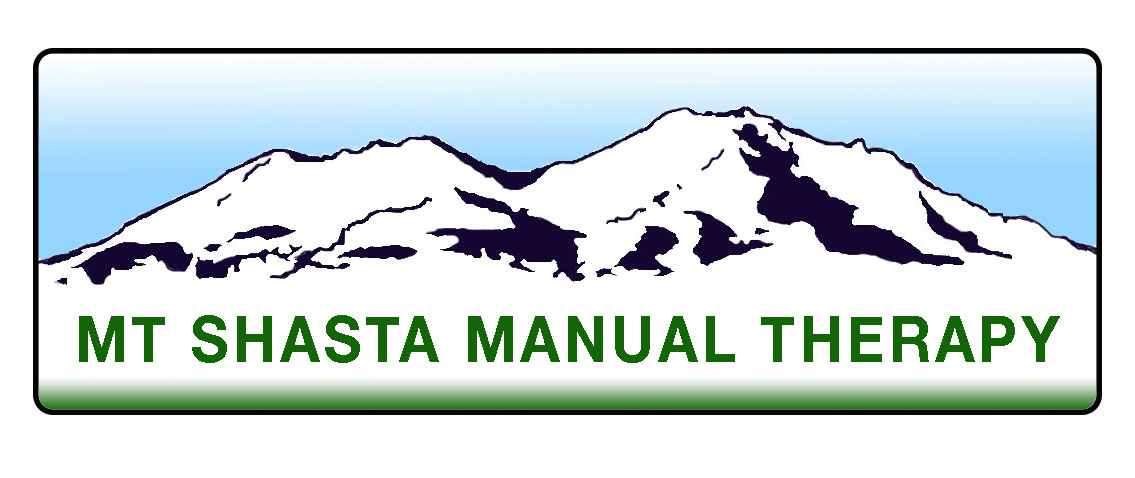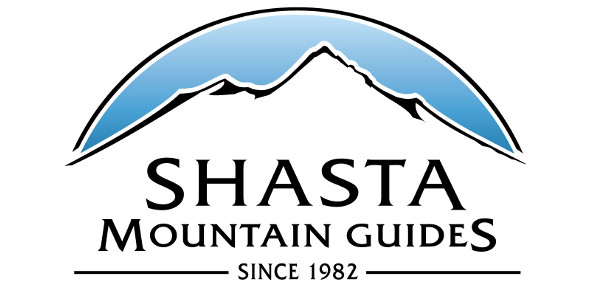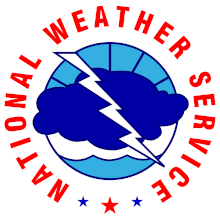You are here
Avalanche Advisory for 2015-02-13 07:03:44
- EXPIRED ON February 14, 2015 @ 7:03 amPublished on February 13, 2015 @ 7:03 am
- Issued by Nick Meyers - Shasta-Trinity National Forest
Bottom Line
The avalanche danger is LOW for most aspects below and near treeline. MODERATE avalanche danger is possible for wet/loose instabilities in the form of point releases, roller balls and pinwheels on SE and S facing slopes steeper than 35 degrees during warm, mid-day hours <9,000 ft.
Above treeline, LOW avalanche danger with pockets of MODERATE danger for wind slab avalanches on cooler, shady slopes SW and clockwise through E.
Avalanche Problem 1: Wind Slab
-
Character ?

-
Aspect/Elevation ?

-
Likelihood ?CertainVery LikelyLikelyPossible
 Unlikely
Unlikely -
Size ?HistoricVery LargeLargeSmall

A spike in westerly winds over the past 48 hours have moved snow onto leeward NE-E-SE facing slopes above treeline. Wind deposited snow creating isolated pockets of small to medium sized wind slabs, 6-12 inches deep, will be possible to trigger today. Shady, cooler slopes hosting these wind slabs should be most suspect for triggering.
Remember that even though it's not snowing, avalanches are still possible.
Avalanche Problem 2: Loose Wet
-
Character ?

-
Aspect/Elevation ?

-
Likelihood ?CertainVery LikelyLikelyPossible
 Unlikely
Unlikely -
Size ?HistoricVery LargeLargeSmall

Wet/loose related instabilities such as roller balls, pinwheels and small to medium sized point release avalanches will be possible today due to warm overnight and daytime temperatures in recent days. While possible to see this type of avalanche problem, high clouds will likely keep these types of instabilities at bay.
If we do see any activity, it will be limited to only the warmest slopes, southeast and south facing, steeper than 35 degrees, lower to mid mountain levels (<9,000 feet). While likely small in size, always remember that wet/loose related instabilities can entrain enough snow as they move downhill to sweep one off their feet and into undesirable terrain.
Recent Observations
Get those flip-flops and shade hats back out because sun is in the box for the next 7 days! That said, Mt Shasta received a doozy of a storm last weekend that dumped 3-4 feet of new snow above 7,000 feet. We issued an avalanche watch and saw the avy danger hit high for a brief period on late Friday and Saturday. Evidence of avalanche debris was observed in Avalanche Gulch and slide activity was certain in other areas, though by the end of the storm evidence was scarce. The first wave of the storm that arrived on late Thursday and Friday was the most powerful, followed by scattered showers mid-weekend, and finished off with a strong last punch of water and even thunder and lightening! It was quite exciting and some areas locally saw some flooding, culvert blockage and compromised roads. Wind was a big theme the entire weekend...southerly winds cranked and blew not only a lot of snow around, but uprooted and broke limbs off many green, live trees.
The skies began to clear on Monday evening and by Tuesday morning the sun was shining and Mt Shasta withdrew its cloudy veil. Since Tuesday, we've seen a crescendo in temperature, reported from the 7,600 foot Old Ski Bowl weather station. Sun and warming temps have begun to transition all that new snow into a melt/freeze cycle and development of our famed corn snow! Transitional is the operative word... aspect, elevation and temperatures are driving good skiing. Low to mid elevation southeast to south slopes are seeing the best daytime softening. Upper elevations SW through NE are still are hosting some wintery, wind packed powder in areas. And of course, due to wind that always seems to blow at some point on Mt Shasta, scoured, icy areas exists on exposed ridgelines.
Observations over the week noted a consolidating/stabilizing snow pack. Numerous extended column tests from Mt Shasta, Gray Butte and Ash Creek Butte resulted in ECTX test scores. This means that no fracture occured during the test. A few ECT tests did produce ECTN20-30, indicating a more stable snowpack. If there was a layer of concern to be labeled, it was the wet, saturated layer below the near-surface crust layers that were widespread throughout the forecast area at low and mid elevations up to about 9,000 feet.
Yesterday, we saw a spike in westerly winds which moved some snow around above 8,500 feet. A wind slab avalanche on the East aspect of Green Butte was triggered by a snowmobiler. The slide was about 150 feet wide with an 8 inch crown and slid 500-800 feet vertically on a non-persistent weak layer. (See photo below / Photo: Malee)
Overall, we have different avalanche problems at different elevations on Mt Shasta. For lower to mid elevations, today we could see wet/loose related avalanche probelms though unlikely due to high clouds. LOW danger with pockets of MODERATE danger on sunny, southeast/south slopes steeper than 35 degrees may see roller balls, pinwheels and point releases. While these slides today probably won't pose a threat, always beware of potential for these slides to knock one off their feet and into undesireable terrain. As one gains elevation, slopes southwest through northeast on the compass or otherwise shady, colder slopes will see LOW danger with pockets of MODERATE avalanche danger for dryer, wind slab avalanches. These slides would look the same as we saw with that snowmobile triggered slide on the cool, east aspect of Green Butte. Remember that even though it's not snowing, avalanche are still possible!
Snowmobile triggered slide below Green Butte / Photo: S Malee
Shastina area looking toward summit of Mt Shasta / Photo: S Larsen
Avalanche Gulch, 2.11.15 / Photo: H Meyers
Shastina, 2.11.15 / Photo: H Meyers
Pit profile showing widespread near surface crust layers / N Meyers





Report your observations to the MSAC! A photo, a few words... send them in! (nimeyers@fs.fed.us or 530-926-9614)
Castle Lake area has a shallow snowpack. Be careful of shallow buried objects. Skiing has been reported as poor to non-existent.
Sand Flat Winter Trails: OPEN, trail conditions are firm and getting thin with some tree debris on snow surface.
Pilgrim Creek Snowmobile Park: OPEN, however due to lack of low elevation snow, one must drive up the road several miles before enough snow is encountered. One CANNOT DRIVE over Military Pass.
-------------------------------------------------------------------------------------------------------------------------------
Terrain: Remember most of the terrain that we like to play on is greater than 30 degrees. Avalanches are possible on anything steeper than 30 degrees. Avoid cornices, rock bands, terrain traps and runout zones of avalanche paths.
Weather: Most of our areas avalanche danger will occur 24-48 hours after a storm. We still can see persistent weak layers from time to time and we always will be sure to let you know about that! Heed the basic signs: Wind (significant snow transport and depositions), Temperature (rain/snow/rain/snow, which in turn weakens the snowpack), and Precipitation (Snow or rain add weight and stress to the current snowpack).
Snowpack: If snow accumulates, give the snowpack a chance to adjust to the new snow load before you play on or near steep slopes (greater than 30 degrees). Most direct action avalanches occur within 24-48 hours of recent snowfall. Watch for obvious signs of snowpack instability such as recent natural avalanche activity, collapsing of the snowpack (often associated with a “whumphing” sound), and shooting cracks. If you see these signs of instability, limit your recreation to lower angle slopes.
Human Factor: Don’t forget to carry and know how to use avalanche rescue gear. You should NOT be skiing or climbing potential avalanche slopes without having beacons, shovels, and probes. Only one person in a group should be exposed to potential avalanche danger at a time. Remember, climbing, skiing, and riding down the edge of slopes is safer than being in the center. Just because another person is on a slope doesn’t mean that it is safe. Be an individual! Make your own decisions. Heed the signs of instability: rapid warming, “whumphing” noises, shooting cracks, snowing an inch an hour or more, rain, roller balls, wind loading, recent avalanche activity.
The Five Red Flags of Avalanche Danger any time of year include: 1) Recent/current avalanche activity 2) Whumpfing sounds or shooting cracks 3) Recent/current heavy snowfall 4) Strong winds transporting snow 5) Rapid warming or rain on snow.
Weather and Current Conditions
Weather Summary
In Mt Shasta City this morning at 0500, we have inversions in place locally and a current temperature of 36 F degrees and partly cloudy skies.
WEATHER STATION INFORMATION (0500hrs):
On Mt Shasta (South Side) in the last 24 hours...
Old Ski Bowl - 7,600 feet, the current temperature is 47 F. Snow on the ground totals 95 inches with 2 inches settlement over the week. Temperatures in the last 24 hours have ranged from 40 F to 52 F.
Gray Butte - 8,000 feet, The current temperature is 50 F and temps have ranged from 42 F to 57 F in the last 24 hours. Winds have been primarily out of the west, averaging 5-15 mph with gusts to 21 mph.
Castle Lake and Mt Eddy (West side of Interstate-5)...
Castle Lake - 5,600 feet, the current temperature is 47 F. Temps have ranged from 38 F to 57 F in the last 24 hours. The Castle Lake area has some snow on the ground though has been receiving mostly rain. The snow depth sensor has been in for repairs and will be installed soon.
Mt Eddy - 6,500 feet, the current temperature is 41 F. Temps have ranged from 38 F to 55 F in the last 24 hours. Current snow depth is 34 inches with 1 inche settlement. Winds have averaged 6 mph and WSW in direction, with gusts to 6 mph.
WEATHER SYNOPSIS: We hope you didn't store those flip flops away to deep because we are back into unseasonably warm temperatures. Inversions are in place this morning with a current temp of 36 F in Mt Shasta and 47 and 50 at the Old Ski Bowl and Gray Butte weather stations, respectively. Weather maps show southwest flow which will continue high clouds as we sit on the west edge of high pressure. Temperatures will cool a bit by tomorrow and winds on the mountain will remain light below treeline for the weekend and light to moderate near and above treeline. Clear and mostly sunny weather will dominate and the storm track for the next week and a half looks bleak. A great time for multi-recreational activities!
THIS SEASON: Since October 1st (the wet season) , we have received 30.10 inches of water, normal is 25.17 inches, putting us at 119% of normal. For the month of February, we sit at 10.10 inches of water, normal is 2.90, putting us at 348% of normal. For the year of 2015, we've received 10.58 inches water, normal is 9.96, equalling 106% of normal.
Looking back into 2014, Mt Shasta finished off with 34.36 inches of water with normal being 43.21 inches, leaving us at 79% of normal for the year. For the month of December, Mt Shasta finished at 163% of normal, receiving 12.83 inches of water, normal is 7.85 inches.
Always check the weather before you attempt to climb Mt Shasta. Further, monitor the weather as you climb. Becoming caught on the mountain in any type of weather can compromise life and limb. Be prepared.
| 0600 temperature: | 47 |
| Max. temperature in the last 24 hours: | 52 |
| Average wind direction during the last 24 hours: | Westerly |
| Average wind speed during the last 24 hours: | 13 mi/hr |
| Maximum wind gust in the last 24 hours: | 21 mi/hr |
| New snowfall in the last 24 hours: | 0 inches |
| Total snow depth: | 95 inches |
Two Day Mountain Weather Forecast
Produced in partnership with the Medford NWS
| For 7000 ft to 9000 ft | |||
|---|---|---|---|
|
Friday (4 a.m. to 10 p.m.) |
Friday Night (10 p.m. to 4 a.m.) |
Saturday (4 a.m. to 10 p.m.) |
|
| Weather | Mostly sunny | Partly cloudy | Sunny |
| Temperature (°F) | 52 | 36 | 52 |
| Wind (mi/hr) | Southerly 5-10 mph | South 5-10 mph | Northerly 5-10 mph |
| Precipitation SWE / Snowfall (in) | / 0 | / 0 | / 0 |
| For 9000 ft to 11000 ft | |||
| Friday | Friday Night | Saturday | |
| Weather | Mostly sunny | Partly cloudy | Sunny |
| Temperature (°F) | 37 falling to 29 by 5pm | 26 | 34 |
| Wind (mi/hr) | Southerly 15-20 mph with gusts higher | Southwest/West 0 | Northerly 10-20 mph |
| Precipitation SWE / Snowfall (in) | / 0 | / 0 | / 0 |


























































